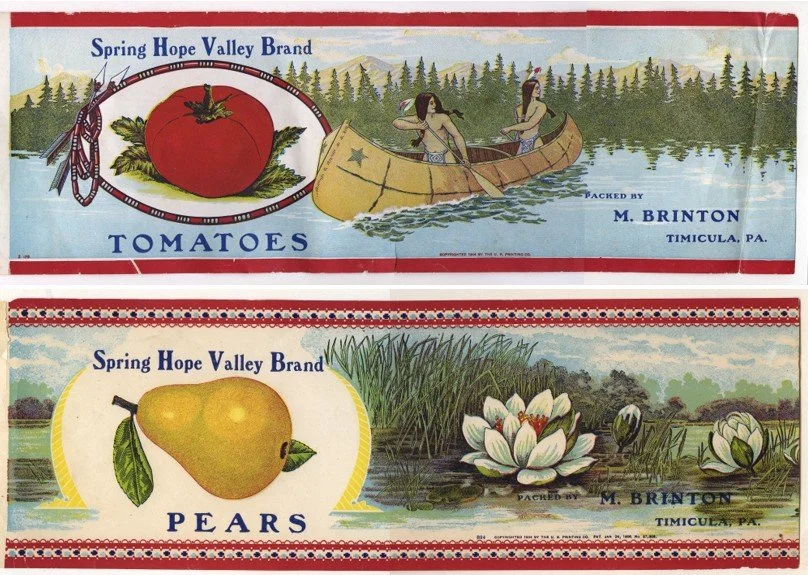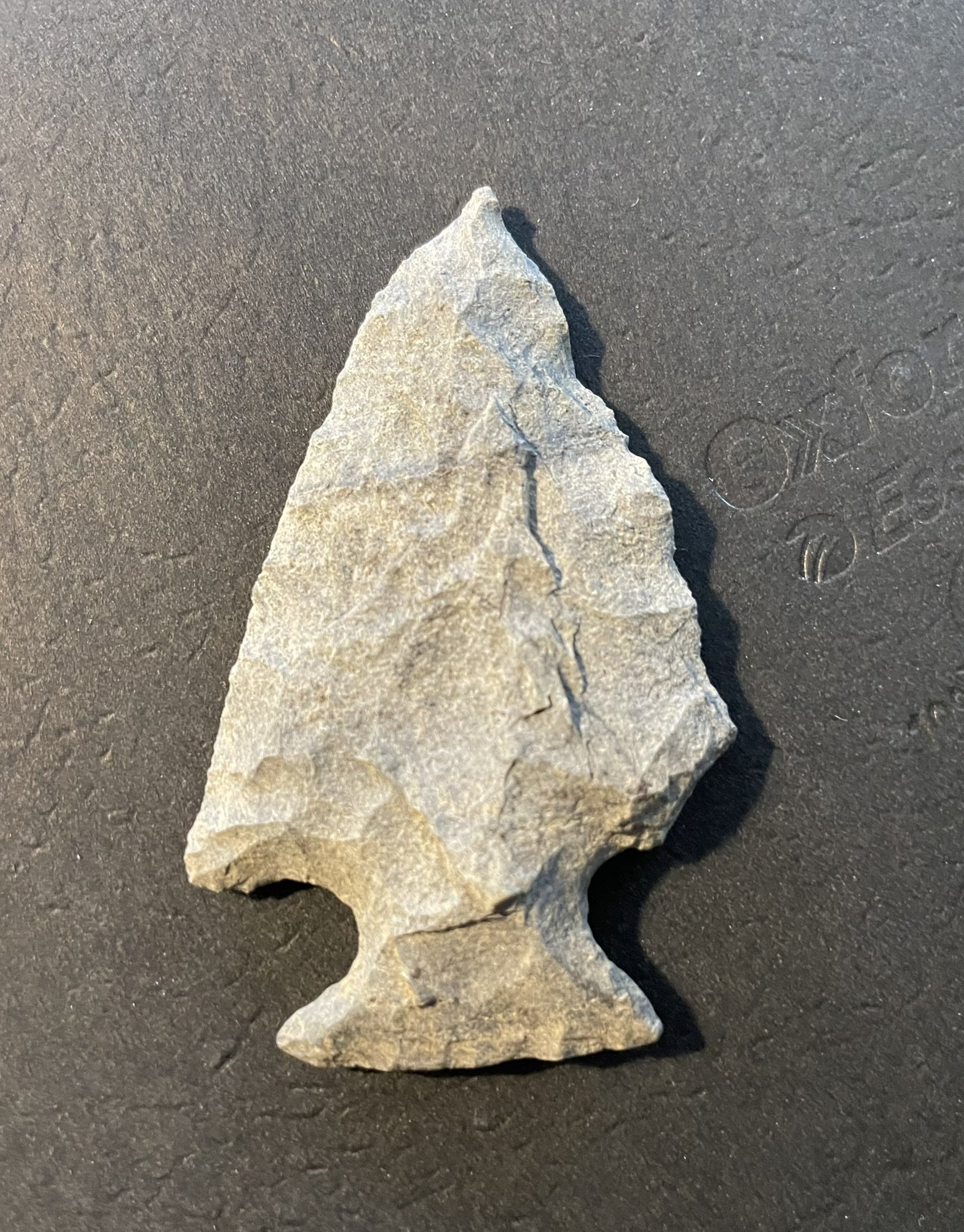
“People will never look forward to posterity who never look backward to their ancestors”
Edmund Burke, 1756
Brinton farmstead, Lancaster County, Pennsylvania. Built 1725. Sketch by Susanna Brinton. 1783.
-

Brinton 1704 House, West Chester PA (ca 1757)
The early settlers came to “Penn’s Colony” in 1684 from England and Ireland — for a better life. The original homestead is preserved as the historic 1704 farmstead museum as seen in image. The settlement is unique because it is one of the oldest and best-restored farmsteads in the United States. Its’ two-story structure has stone walls 22 inches thick, with 27 casement windows of diamond-shaped panes with leaded sash. William Brinton 1st was an industrious farmer servicing the Philadelphia area with farm goods and products.
-

Brinton Mill, Chadds Ford, Pa. Brush, Andrew Wyeth, 1958
The family mill, also called The Mill at Brinton's Bridge, was built in 1720 serving the community in food and grain processing up until the 20th century when Andrew Wyeth and his wife extensively renovated it as a residence. During the Battle of Brandywine in September 1777, troops were bivouacked here. Slowly after this point, depredations of development leading into the war years brought an entirely new, non-local economy to the region, and the once-useful producing buildings fell into non-use (later renovated and listed on the National Register).
-

Brinton homestead, Lancaster County. Sketch, S Brinton, 1783
William and his wife Ann Bagley, Quakers, arrived in America in 1684, settling in “Penns Colony”. “Go west” meant moving inland from Chester to Lancaster County! They erected a temporary shelter - the winter was cold and severe and they suffered greatly. Had it not been for the kindness of the Lenape and Monongahela Indians who supplied them with game, they could not have endured. The expansion of the family into Lancaster County was part of the extensive farming enterprising of the family. It was on this farm that some of the earliest farm machinery were tested.
-

Brinton Glenrose Farm (ca. 1880)
Hidden (and somewhat isolated), the family built up a sustainable ag community in Spring Hope Valley, the town renamed to “Timicula” by regional decree, (pronounced Ti-mic'-u-la) and the village later renamed “Glenrose” by the Quakers- with dairy farm, grist-mill run by water-mill, cannery and store. The nearby train tracks carried goods to and from Philadelphia and on to Pittsburgh. When the great dam broke in the famous storm of 1900, it was not rebuilt and the goods and service fell in decline. The community started to crumble. Will Brinton spent part of his childhood years here while his Grandfather David was still alive.
-

Brinton Store and Post Office
Nearby to the Glenrose community in Chester County another Brinton group built Spring Hope store, with a public scales, and post office complex (including a lock-up cell and an office for the Justice of Peace, a Quaker) that was the center of activities for the Valley. The loss of the dam and associated mill power source in the great flood, and inability of government to fund rebuilding, amidst so much pressure on urbanization, triggered a slow and then more rapid decline in the prosperous community, with many of the family residences lost and some converted to registered historic sites, or torn down.
-

Spring Hope Valley - a Brinton brand
Another early local farming enterprise coming from the Brinton Timicula settlement (ca. 1900) was the processing and canning factory. David Brinton the name of Spring Hope, but the regional Post Office rejected it, thus it became the family Brand.
The factory bought from local growers and processed vegetables and fruit into various storable forms. The factory fell into decline after the big flood that knocked out the family grist mill and ending operations of processing and milling grains and beans.
-

Brinton Truck Co., Coatesville Pa
By the 1920’s, Pennsylvania played a pivotal role in the American automobile industry. Among the region's notable contributions aside from Studebaker and Dodge Steamers was the Brinton truck manufacturing company in Coatesville. This enterprise became a modest employer for many local families during this period of rapid industrialization. However, the industrial might of Detroit's automobile giants soon proved overwhelming. Family records indicate that the large-scale manufacturers in Detroit cornered the market for key parts, ultimately stifling the Brinton family's operations. By the end of the 1920s, much of the Pennsylvania-based automobile industry had collapsed under the weight of this industrial juggernaut.
-
Chas Brinton Bag Factory
Key in developing a local, ag economy, the Brinton’s set up a bag manufactory for products mostly seeds and grain mixtures. The availability of natural water power at Glen Rose from the Buck Run resulted in development of this and other milling facilities and the continued local importance of this crossroads community. Architecturally Glen Rose, is vernacular in character & style, but with its main emphasis on utility. Glen Rose is, however, a well preserved, cohesive and intact example of the vernacular rural village of the second period of the township's early development (1761-1810) into the 2nd phase ending around 1930
-

Brinton's in New England
As with all early US settlers, the family branched out and this 1905 scene in Maine captures the origin of the now current Brinton farm which became an agricultural enterprise with soil and crop research after the farm had fallen in decline as a viable dairy and sheep operation. Some of the Brinton and related Quakers (Howland’s) settled in the Vasselboro, Maine region by 1900.
-

Struggle for authentic rural life
Long before Pennsylvania became a state—indeed, nearly a century before America declared independence—the Quaker colony was an experimental model testing sustainable rural life, agricultural productivity with peaceful coexistence with the declining Native Indians.
The early Quakers (pictured David Brinton, 1893) changed the region with every desire to stay, after the first arrived in 1680. Records show the family acquired property from the Lenape and Monongahela tribes (if not also from William Penn) through the 1700’s and fostered (necessarily) a peaceful, agrarian life rooted in regional self-sufficiency. For generations, these families thrived, shaping a landscape of working farms, mills, and villages that balanced enterprise with a strong rural ethic. However, as urbanization gained momentum the pressures on farming steadily increased, threatening this once-dominant way of life: this area of PA is today a maze of interlacing highways; the lake has vanished.
-

Prosperous Pre-European PA
The early Pennsylvanian Quaker settlers “found the forest a busy place, as the traveler frequently met Indians on the trail.” These encounters proved the Natives not to be enemies as “few have had as good a record as Pennsylvania Indians in courtesies and friendship to strangers.”
(Indian Paths of Pennsylvania, P Wallace, 1952).These trails were numerous and led all over PA for the land was rich. The Susquehannock Indians brought great wealth alone in beaver skins to trading posts on the lower Schuylkill and Delaware rivers. This Indian “highway” laid the foundations for Pennsylvania’s commercial eminence and which provides strength without which the colonialists would have required more time and experience to accomplish. A key to much of PA early history is in fact the struggle by colonialists to control the preexisting Native American economy developed by the Minquas living between Philadelphia and the Susquehanna.
-
Early beginnings
Archaeological recovery at the Irwin-Brinton settlement site, near Clearfield, along the West Branch of the Susquehanna River, found that prior to the Europeans it has been nearly continuously occupied by Native Americans beginning at least 8,200 years ago, making this Brinton family property one of the oldest and rarest sites in Pennsylvania
Artifacts recovered included many points and cherts of a variety of stone types, some of which were brought to the site from great distances. The pictured point (above) is a Perkiomen broad spear, used between 1,000 and 1,800 BC. Many such broad spears were used as knives. Ear-notched points of this type are found on sites dating to approximately 6,000 years ago and derive typically from rhyolite, a material that comes from south-central PA.
A rich and diverse American culture flourished on this fertile river-bottom site THOUSANDS of years before the family arrived.

The expression “becoming native to this place” is attributed to Wes Jackson to express post-colonial pioneering to discover “intrinsically local” living that is respective of the land’s potential.
Kitchen and dining area, Brinton 1704 House


